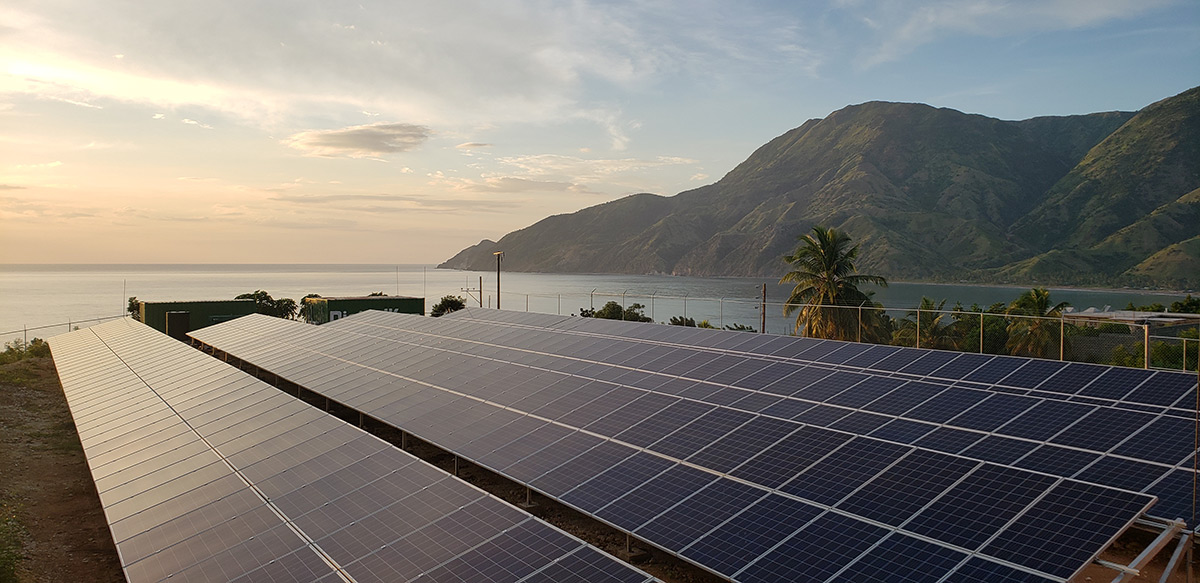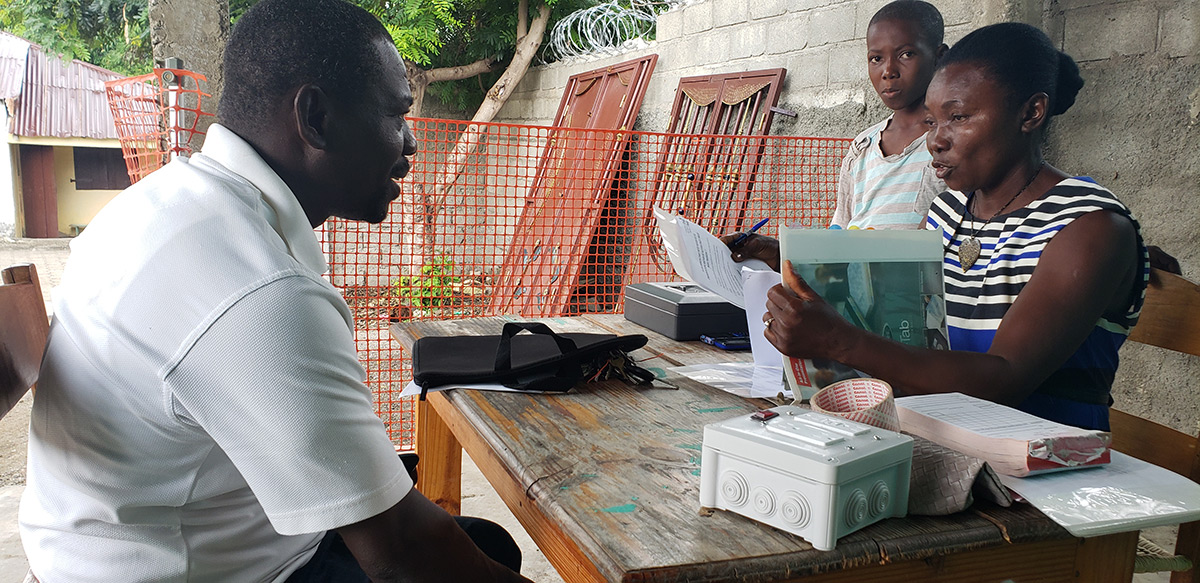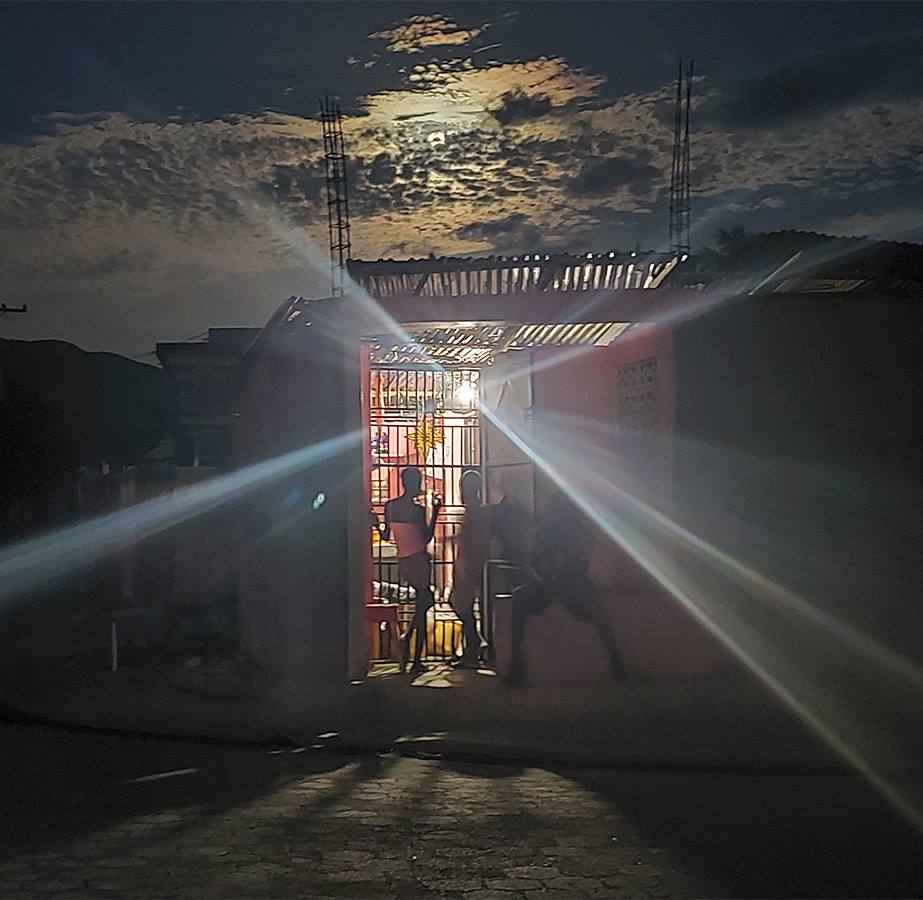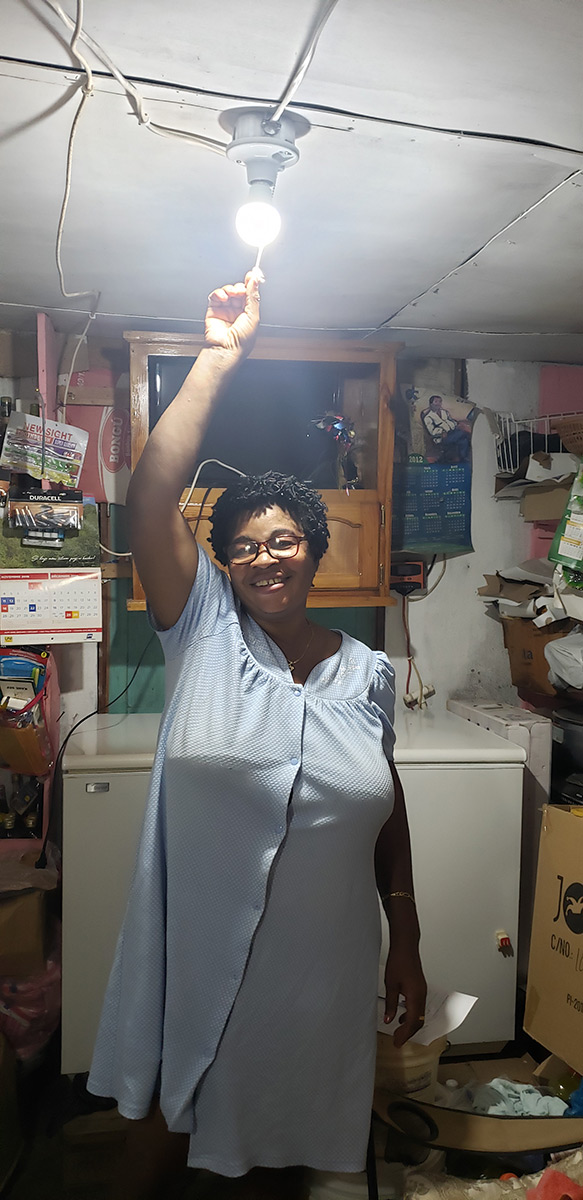After nearly a decade of work demonstrating the economic and technical feasibility of microgrids–as well as their ability to reduce carbon emissions–EarthSpark International has the go-ahead to begin work on a massive project that will ultimately bring clean, renewable electricity to over 80,000 people in 22 towns in Haiti.

EarthSpark brings more than a decade of experience to this venture. As part of a larger $45 million dollar package that will blend funding from multiple sources, the commitment from the Green Climate Fund calls for an additional 5.8 MW of installed solar capacity for Haiti, and will allow EarthSpark to launch a project development company and begin work immediately on two new Haitian microgrids. EarthSpark will partner on the project with the Nordic Environment Finance Corporation (NEFCO).
With resources of over $10 billion, the Green Climate Fund was established under the United Nations Framework Convention on Climate Change (UNFCCC). It is the world’s largest funding source for developing countries to reduce their greenhouse gas emissions and adapt to climate change.
EarthSpark President Allison Archambalt said ““This is a huge achievement because GCF’s backing will enable other funders to join the project and bring solar-powered smart grids to communities most in need. Aside from the money, we are really gratified that microgrids have been recognized as a key solution to climate change.”
EarthSpark customers will cut their energy costs at least 50 percent with a microgrid

Haiti is the least electrified country in the western Hemisphere, Archambault explained. But it is home to multiple densely packed communities. That’s ideal for microgrids, because it reduces the cost of constructing local electricity distribution systems.
The new EarthSpark microgrids will change the energy landscape in Haiti in a major way, supplying power for the first time to people who have none. The Hatian projects will also serve as a blueprint for other developing countries that are struggling to provide access to clean energy.

In addition to the Green Climate Fund providing vital capital to start the building process, EarthSpark’s Haitian microgrids have favorable economics, particularly from the point of view of Haitian customers.
“All our customers are saving at least 50 percent on their pre-grid energy costs, and the smallest households are saving 80 percent,” Archambault explains. That’s because even if they have been living without electricity, Haitians have had to buy kerosene for lighting and charcoal for cooking. Businesses have had to use diesel, which is very expensive because it has to be imported to an island.
“We cut their costs in half,” says Archambault “so from our customers’ perspective, microgrids represent a huge cost savings while also delivering an enormous service quality improvement.”
EarthSpark built its case with microgrids in Les Anglais and Tiburon

In 2012, EarthSpark built a microgrid for the village of Les Anglais, the first “smart solar” microgrid in Haiti. In December of 2019, EarthSpark commissioned its second microgrid for the village of Tiburon. The Tiburon microgrid was the first project to receive a license from Haiti’s newly created energy regulatory authority – L’Autorité Nationale de Régulation du Secteur de l’Energie (ANARSE). A clear regulatory environment is necessary to satisfy investors and can help or hinder the development of distributed renewable energy in developing countries.
“With Les Anglais, we proved what is possible,” Archambault says. “Everybody thought we were crazy to say we could power a town with solar, batteries, and smart meters. We started with 45 customers, and then in 2015 we expanded it to serve 2,000 people with over 400 electric connections.”
Since then people have come from all over the world to see what clean, affordable power looks like. EarthSpark calls the process “de-risking by doing,” showing a proof-of-concept to skeptical investors.
SparkMeter enables critical functions in payment, theft prevention and load management

When EarthSpark was in the process of developing Les Anglais, the organization realized that there was no low-cost meter with the functionality that could meet its needs. EarthSpark developed a prototype and in 2013, released it as the SparkMeter, spinning off a for-profit entity to further develop and market the product.
Now SparkMeter meters are used in 25 countries, and SparkMeter is a Component Partner of HOMER Energy by UL.
SparkMeter brought crucial functionality to the Les Anglais grid, delivering capabilities that were specifically adapted to a microgrid serving low-use, low-income populations in developing countries:
• Time-of-Use (TOU) pricing: Allows better load management, and microgrid owners can pass the savings on to customers.
• Load limiting: When signing up for service, customers choose their load limit, and SparkMeter meters manage that functionality. Microgrid managers can remotely change load limits based on customer needs.
• Prepayment: Enables customers to pre-pay for electricity use, eliminating the cost of bill collection and the risk of incomplete billing.
• Theft detection: Allows microgrid managers to automatically and remotely calculate and compare electricity use and payments, thus revealing theft in the system. Critical to successful microgrid operation in developing countries where electricity theft is rampant.
• Manage and monitor all aspects of the microgrid: Allows microgrid managers to be proactive in addressing technical issues.
Community engagement is the key to the success of energy access microgrids

EarthSpark’s new grant and debt funding from the Green Climate Fund is not just intended to target the hard costs of infrastructure. The project will also include support for improving the livelihoods of Haitians in the villages where the new microgrids will be built, with a special focus on agriculture and food security. There is also a gender component that will build on the work EarthSpark has done on what the non-profit calls “Feminist Electrification.”
That means making women a key part of energy planning and operation—including them in a meaningful way in infrastructure planning, employment opportunities, governance of new energy systems, and enterprise support for the small and medium businesses (SMEs) that are served by new electric resources.
In practical terms, that means making sure that women are meaningfully involved in all aspects of the project.
EarthSpark has already won a UN award for showing how climate and gender justice are closely related, and for showing how the empowerment of women—as described by EarthSpark’s “Feminist Electrification” strategy—leads to better outcomes for the environment.
“This is the beginning of a much bigger and more interesting journey to define how people participate in power systems. When electricity arrives in a town it’s a historic moment, and many things change, “ says Archambault. “That’s a moment of incredible opportunity.”
HOMER software delivers industry-leading system simulations, optimization, sensitivity analysis and best-in-class storage models across three categories of hybrid systems: islanded microgrids, grid-connected distributed generation, and front-of-the-meter utility-scale storage and hybrid systems.
Learn More
Visit UL Solutions HOMER® software to learn more about HOMER Pro, HOMER Grid and HOMER Front modeling and optimization software, download complimentary trials, sign up for training and explore our extensive knowledge base and other support documents.

Greetings from Finland!
Newly developed small scale WtE -multifuelenergyplant for distributed energy and electricity production for your microgrid solution for rural areas:
https://www.ferroplan.fi/en/asiakkaat/case&id=565
Hi Joonas,
Thank you so much for your comment! You have an impressive website and I enjoyed reading about the plant in Vietnam, which is somewhat similar to our recycling plant here in Boulder. I’m going to email you with some additional questions.
All the best,
Lili Francklyn